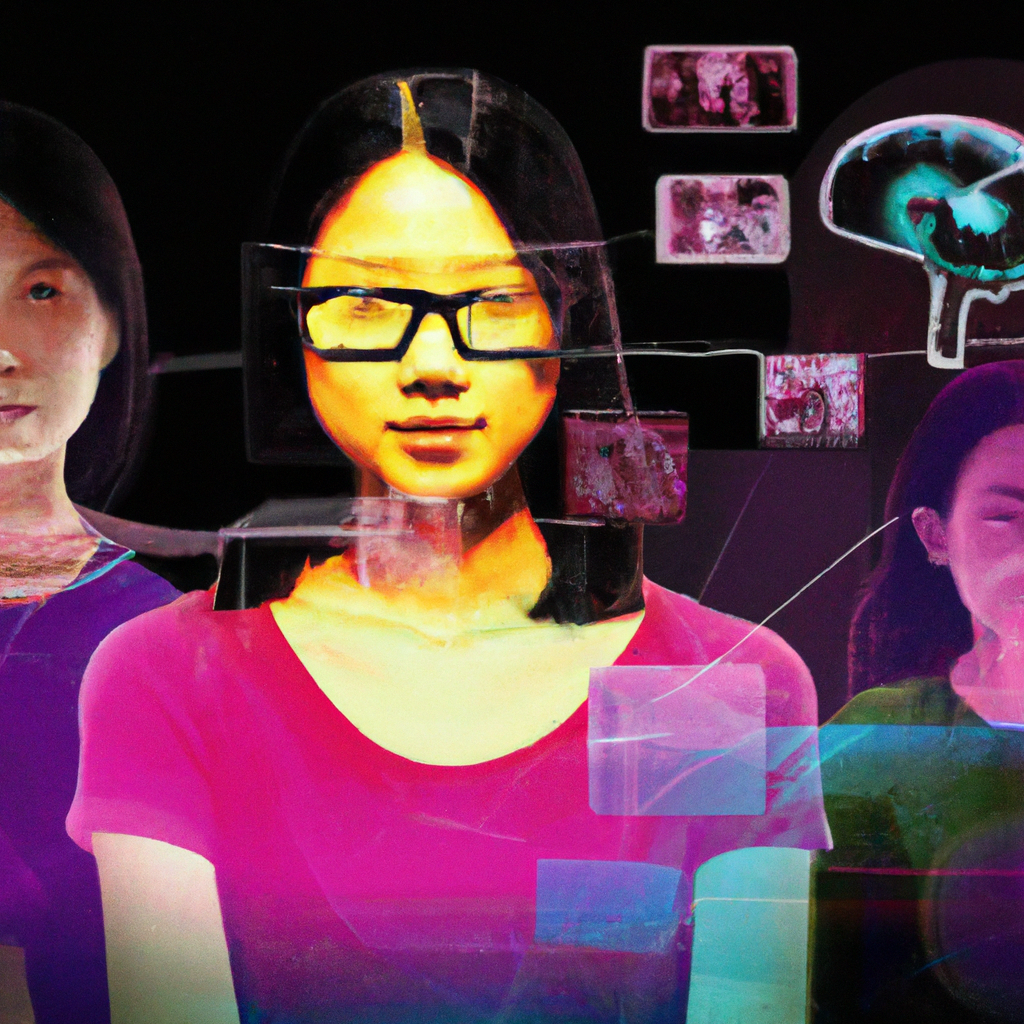Imagine a world where your wearable device acts as your personal assistant, helping you navigate through your daily routine seamlessly. This is the future of wearable technology, where artificial intelligence (AI) becomes integrated into our everyday lives. With AI wearables, you can expect personalized recommendations, real-time data analysis, and proactive suggestions that cater to your preferences and needs. Whether it’s suggesting the fastest route to your destination, reminding you of important tasks, or even monitoring your health, these AI-powered wearables are set to revolutionize the way we interact with technology.

The Emergence of AI in Wearable Technology
Wearable technology has evolved rapidly over the years, integrating advanced Artificial Intelligence (AI) capabilities to enhance its functionality. AI has become a key component in various wearable devices, revolutionizing the way we interact with technology and improving the overall user experience. From AI-powered smartwatches to AI-driven fitness trackers, these devices are now capable of analyzing and interpreting data in real-time to provide personalized recommendations and insights. The integration of AI in wearable technology has not only expanded its capabilities but has also opened doors to new opportunities in different sectors, such as healthcare, fitness, and communication.
Progression of AI in Wearable Tech
The progression of AI in wearable technology has been remarkable. Initially, wearable devices were limited to basic functionalities, such as counting steps or measuring heart rate. However, with advancements in AI, these devices can now analyze complex data patterns and provide valuable insights to the users. AI algorithms have become more sophisticated, allowing wearables to gather data from various sensors and interpret it in real-time. This has led to the development of smarter wearable devices that can adapt to user preferences and provide personalized recommendations.
Role of AI in Enhancing Wearable Tech’s Capabilities
AI plays a crucial role in enhancing the capabilities of wearable technology. By utilizing machine learning algorithms, wearable devices can learn user behavior and patterns, allowing them to provide accurate and personalized recommendations. For example, AI-powered smartwatches can analyze a user’s sleep data and provide suggestions to improve sleep quality. Similarly, AI-driven fitness trackers can analyze fitness data to create customized workout plans based on individual goals and abilities. AI provides a level of intelligence to wearable devices, making them more intuitive and user-friendly.
Types of AI-Based Wearable Technologies
AI-powered Smartwatches
AI-powered smartwatches have become increasingly popular due to their ability to seamlessly integrate with our daily lives. These wearables are equipped with AI algorithms that can monitor various parameters such as heart rate, activity levels, and sleep patterns. They can provide real-time feedback and insights to help users make informed decisions about their health and well-being. Additionally, AI-powered smartwatches can connect to smartphones, allowing users to receive notifications, make calls, and even interact with virtual assistants.
AI-driven Fitness Trackers
Fitness trackers have come a long way since their inception, thanks to AI. These devices combine AI algorithms with powerful sensors to track and analyze fitness data with precision and accuracy. They can monitor activities such as steps taken, calories burned, and sleep patterns. The AI capabilities in fitness trackers enable them to provide personalized insights and recommendations, making it easier for users to achieve their fitness goals. With AI-driven fitness trackers, users can gain a deeper understanding of their overall health and take proactive measures to improve it.
AI-embedded Smart Glasses
AI-embedded smart glasses have the potential to revolutionize various industries, from healthcare to logistics. These wearable devices are equipped with built-in AI capabilities, enabling them to recognize objects, analyze data, and provide real-time information. For example, AI-embedded smart glasses can assist in augmented reality (AR) applications, allowing users to overlay digital information onto the real world. In healthcare, these smart glasses can provide vital information to doctors during surgeries, making procedures more efficient and accurate.
Internet of Things with AI
AI and the Internet of Things (IoT) go hand in hand when it comes to wearable technology. IoT devices, such as smart home systems and connected cars, can be integrated with AI algorithms to enhance their functionality. Wearable devices can act as a bridge between IoT devices and users, providing real-time data and personalized recommendations. For example, a smartwatch connected to a smart home system can analyze the user’s preferences and adjust the temperature and lighting accordingly. This integration of AI and IoT in wearables opens up endless possibilities for a more connected and intelligent future.
Understanding the Integration of AI in Wearable Devices
How AI Works in Wearable Technology
AI works in wearable technology through the use of machine learning algorithms. These algorithms allow the wearable devices to analyze data collected from various sensors and make intelligent decisions based on the patterns they observe. For example, an AI-powered smartwatch can analyze heart rate data and identify irregularities or fluctuations, alerting the user to seek medical attention if necessary. The more data these devices collect and analyze, the better they become at providing accurate and personalized recommendations.
The Combination of AI and IoT in Wearables
The combination of AI and IoT in wearables is a powerful duo that amplifies the capabilities of wearable devices. IoT devices collect vast amounts of data from various sources, such as sensors and connected devices. AI algorithms can process this data in real-time, allowing wearables to provide meaningful insights and recommendations to users. For example, wearable devices can connect to smart home systems and learn the user’s preferences and habits. This information can then be used to automate various tasks, such as adjusting the temperature or turning on the lights when the user enters a room.
Application of AI Wearables in Everyday Life
Health and Fitness
AI wearables have transformed the way we approach health and fitness. These devices can monitor vital signs, track fitness activities, and provide real-time feedback to help users achieve their health goals. For example, AI-driven fitness trackers can analyze heart rate data to determine the optimal intensity for workouts, preventing overexertion and injury. AI-powered smartwatches can also track sleep patterns and provide personalized recommendations for improving sleep quality. By integrating AI into wearables, users have access to a wealth of valuable information about their health and can take proactive measures to maintain a healthy lifestyle.
Personalized Recommendations
One of the key advantages of AI wearables is their ability to provide personalized recommendations. AI algorithms can analyze user data, such as activity levels, sleep patterns, and dietary habits, to generate personalized insights and suggestions. For example, an AI-powered smartwatch can analyze a user’s sleep data and recommend adjustments to their sleep schedule or bedroom environment for better rest. Similarly, AI-driven fitness trackers can analyze workout data and suggest modifications to optimize fitness routines. These personalized recommendations empower users to make informed decisions and tailor their actions based on their unique needs and goals.
Smart Homes
AI wearables play a significant role in the development of smart homes. By integrating AI algorithms with wearable devices, users can control various smart home systems and appliances with ease. For example, a user wearing an AI-powered smartwatch can adjust the temperature, turn on lights, and even lock doors simply by using voice commands or intuitive gestures. The integration of AI wearables with smart home technology provides a seamless and intuitive way to interact with our surroundings, making daily life more convenient and efficient.

AI Wearables in Healthcare
AI in Remote Health Monitoring
AI wearables have the potential to revolutionize remote health monitoring. These devices can continuously track vital signs and collect data that can be analyzed in real-time. This allows healthcare professionals to remotely monitor patients, particularly those with chronic conditions or the elderly, and intervene promptly when necessary. For example, AI-powered wearables can detect abnormalities in heart rate or blood pressure and alert healthcare providers, enabling them to provide immediate care. The continuous monitoring provided by AI wearables ensures early detection of health issues and facilitates timely interventions, ultimately improving patient outcomes.
Predictive Analysis
AI wearables enable predictive analysis by using machine learning algorithms to identify patterns in data collected over time. This analysis can help predict potential health risks or identify the onset of diseases. For example, AI-driven wearables can detect subtle changes in sleep patterns or heart rate variability that may indicate the early signs of conditions like sleep apnea or cardiovascular disease. By providing users with early warnings and alerts, AI wearables empower individuals to take proactive measures and seek medical attention promptly, potentially preventing more severe health issues in the future.
Wearable NFC (Near-Field Communication) Technology in Healthcare
The integration of Near-Field Communication (NFC) technology in wearable devices has significant implications for healthcare. NFC allows for secure and seamless communication between wearables and other devices, such as medical equipment or electronic health records. This technology enables healthcare professionals to access patient information quickly and accurately, improving the efficiency of care delivery. Additionally, NFC-enabled wearables can facilitate secure data transfer, ensuring the privacy and integrity of sensitive health information. Wearable NFC technology has the potential to streamline healthcare processes, enhance patient care, and improve overall health outcomes.
AI Wearables in the Fitness Industry
AI for Personal Fitness Training
AI wearables have transformed the way we approach personal fitness training. These devices can provide personalized workouts based on individual goals, preferences, and fitness levels. With AI algorithms analyzing data such as heart rate, steps taken, and calories burned, users can receive real-time feedback and optimize their training routines. For example, AI-driven fitness trackers can adjust workout intensity based on heart rate variability, ensuring users are training in the most efficient and safe manner. AI wearables serve as virtual personal trainers, offering customized guidance and support to individuals striving for fitness excellence.
Data Analysis for Performance Enhancement
AI wearables have become game-changers in the world of professional sports and athletic performance. These devices can collect vast amounts of data during training and competition, such as movement patterns, muscle activation, and biometric measurements. AI algorithms can then analyze this data to identify areas for improvement, optimize training strategies, and enhance overall performance. For example, AI-driven wearables can detect running gait abnormalities and provide real-time feedback to correct form and prevent injuries. The data-driven insights provided by AI wearables give athletes and coaches a competitive edge, enabling them to achieve peak performance and reach new heights in their respective fields.
Use of AI Wearables in Communication
Augmenting Communication with AI
AI wearables have the potential to augment communication by enabling seamless interaction with virtual assistants and voice-activated technologies. These devices can understand and respond to voice commands, allowing users to perform various tasks without the need for physical interaction. For example, AI-powered smartwatches can integrate with voice assistants like Siri or Google Assistant, enabling users to compose text messages, make phone calls, or even search the internet using voice commands alone. AI wearables transform the way we interact with technology, making communication more convenient, efficient, and hands-free.
Use of AI Wearables for Seamless Integration into Social Norms and Practices
AI wearables are designed to seamlessly integrate into social norms and practices, ensuring that they enhance, rather than disrupt, everyday interactions. These devices can be discreet and unobtrusive, fitting seamlessly into our daily routines. For example, AI-embedded smart glasses can overlay digital information onto the real world without drawing attention, allowing users to access information discreetly. Additionally, the integration of AI algorithms in wearables enables devices to learn user preferences and adapt accordingly, ensuring a personalized and intuitive user experience. This seamless integration of AI wearables into social norms and practices paves the way for widespread adoption and acceptance.
Impact of AI Wearables on Data Privacy
Concerns Regarding Data Privacy
The integration of AI in wearable technology raises concerns about data privacy. As wearable devices collect and store vast amounts of personal data, there is always a risk of unauthorized access or misuse. For example, health data collected by AI wearables could potentially be exploited if not properly protected. Moreover, wearable devices that are constantly connected to the internet can be susceptible to cyber-attacks. It is crucial for manufacturers and developers to prioritize data security and implement robust measures to safeguard user information and privacy.
Regulations to Ensure Protection of Users’ Data
To address concerns regarding data privacy in AI wearables, regulatory bodies and policymakers have implemented stringent regulations and guidelines. These regulations aim to ensure that wearable device manufacturers follow strict data protection practices and prioritize user privacy. For example, the General Data Protection Regulation (GDPR) in Europe mandates that organizations obtain explicit consent from users before collecting their data. Additionally, wearable device manufacturers are encouraged to implement encryption, tokenization, and other security measures to protect data from unauthorized access. Regulations play a vital role in maintaining trust in AI wearables and ensuring the protection of users’ data.
Future Development of AI in Wearable Tech
Emerging Trends and Predictions
The future of AI in wearable technology is promising, with several emerging trends and predictions. One such trend is the increased integration of AI with augmented reality (AR) in smart glasses, offering immersive and interactive experiences. Additionally, advancements in AI algorithms will lead to greater accuracy and precision in data analysis, providing users with more detailed insights and recommendations. The future will also see the emergence of wearables that combine different AI technologies, such as natural language processing and computer vision, to create more intelligent and intuitive devices. Moreover, the integration of AI wearables with 5G technology will enhance connectivity and enable real-time data processing, opening doors to new applications and possibilities.
Impacts on Data, Connectivity, and User Interface
The development of AI in wearable technology will have significant impacts on data, connectivity, and user interfaces. As AI wearables become more intelligent, they will generate and analyze vast amounts of data. This will require robust data management systems and infrastructure to handle and process the data efficiently. Furthermore, advancements in connectivity, such as the rollout of 5G networks, will enable faster data transfer and real-time communication between wearable devices and other connected systems. In terms of user interface, AI wearables will become more intuitive and seamless, utilizing voice commands, gestures, and augmented reality to enhance user experience and interaction.
Role of Innovation in the Progress of AI Wearable Technology
Innovation plays a crucial role in the progress of AI wearable technology. Wearable device manufacturers must continuously push the boundaries of technology to develop new and innovative features. Collaboration between technology companies, healthcare providers, and other industry stakeholders is essential in driving innovation in AI wearables. By investing in research and development, exploring new use cases, and leveraging advancements in AI algorithms, the wearable technology industry can unlock the full potential of AI. Innovation will not only improve the functionality and performance of wearable devices but will also address challenges and limitations, propelling AI wearables into the future.
Challenges and Limitations of AI in Wearable Technology
Technical Hurdles
The integration of AI in wearable technology presents various technical challenges. One of the key challenges is power consumption. AI algorithms require significant computational power, which can be a drain on the battery life of wearable devices. Balancing the need for powerful AI capabilities with energy efficiency is a significant technical hurdle that manufacturers must overcome. Additionally, ensuring the accuracy and reliability of AI algorithms is crucial. Machine learning algorithms must be trained on large datasets and continuously updated to adapt to new patterns and behaviors. This requires robust computing infrastructure and high-quality data to produce reliable and accurate insights.
Adoption and Interaction Challenges
The widespread adoption of AI wearables faces challenges related to user acceptance and interaction. Despite the advancements in AI technology, some users may still be hesitant to embrace wearable devices due to concerns about privacy, data security, and the perception of being constantly monitored. Manufacturers must address these concerns through transparency, educating users about the benefits and privacy features of wearable devices. Additionally, the design and user interface of AI wearables play a crucial role in adoption. Devices must be user-friendly, intuitive, and seamlessly integrate into the user’s daily life to ensure a positive user experience and encourage widespread adoption.
Issues in Data Security
Data security is a significant concern in AI wearables, given the personal and sensitive nature of the data collected. Wearable devices are constantly collecting and transmitting data, creating potential vulnerabilities for unauthorized access, data breaches, and misuse. Manufacturers must prioritize data security measures, such as encryption, secure data transfer protocols, and robust authentication mechanisms. Regular software updates and patches should also be provided to address any vulnerabilities that may arise. Education and awareness among users about data security best practices are also crucial in mitigating the risks and ensuring the privacy and confidentiality of user information.
In conclusion, the integration of AI in wearable technology has transformed these devices into powerful tools that enhance our everyday lives. From AI-powered smartwatches to AI-driven fitness trackers and AI-embedded smart glasses, these wearables provide personalized recommendations, enable remote health monitoring, enhance communication, and improve overall efficiency. However, challenges such as data privacy, technical hurdles, and user acceptance must be addressed to fully unlock the potential of AI wearables. With continued innovation, collaboration, and advancements in AI algorithms, the future of wearable technology looks promising, paving the way for a more connected, intelligent, and personalized future.



